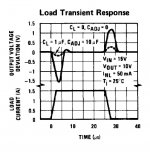Mike_Z
Veteran Member
I've been working on a home built 8080A computer, that I made in 1976. Sometimes it works like a camp and other times it will frustrate me to no end. The computer is a s-100 based machine. I have a section of an old IMASI mother board for my S-100 bus. I have 5 vector wire wrap boards on the bus, each with a local +5 volt regulator (7805). I have made some improvements to the main power +8 system. I have added an adjustable switching regulator to lower the general +8 volts from around +11 to a little over +8. This relieves the 7805 some and they run a lot cooler. The ripple on the main power is about 0.1 volts or less. With all the board in service I am drawing about 5 amperes.
The problem is noise on the individual boards. I have replace all the 7805 regulators, they all have heat sinks and have heat transfer paste on them. I have measured the heat sink temperature and the hottest one is about 120 degrees F. Each regulator has a 0.47 uf capacitor on the input and a 0.1 uf capacitor on the output. Each of these capacitors are mounted right at the terminals of the regulator. These capacitors are ceramic type. I've also installed a number of 0.01 uf ceramic caps near most of the IC's. Generally this solves the problem of noise on control lines etc.
Yet, this last week I have been chasing noise on my CPU board. The noise has been getting on my RESETIN line causing the CPU to lose it's focus. Today I'm going to change the 7805 again, with a new one. and maybe add a few more bypass caps. I've been reading about proper bypass but need more help. Any suggestions would be appreciated.
Thanks
Mike
The problem is noise on the individual boards. I have replace all the 7805 regulators, they all have heat sinks and have heat transfer paste on them. I have measured the heat sink temperature and the hottest one is about 120 degrees F. Each regulator has a 0.47 uf capacitor on the input and a 0.1 uf capacitor on the output. Each of these capacitors are mounted right at the terminals of the regulator. These capacitors are ceramic type. I've also installed a number of 0.01 uf ceramic caps near most of the IC's. Generally this solves the problem of noise on control lines etc.
Yet, this last week I have been chasing noise on my CPU board. The noise has been getting on my RESETIN line causing the CPU to lose it's focus. Today I'm going to change the 7805 again, with a new one. and maybe add a few more bypass caps. I've been reading about proper bypass but need more help. Any suggestions would be appreciated.
Thanks
Mike

